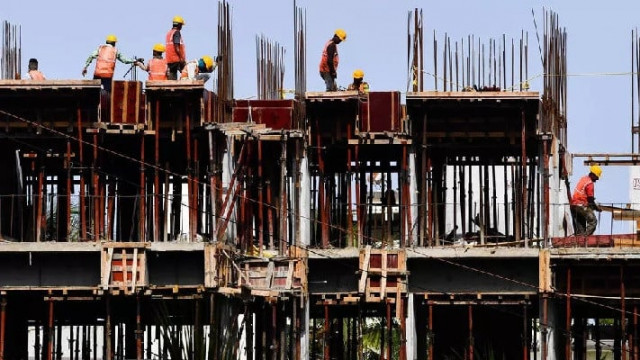Indian economy contracts by record 7.3% in 2020-21
About 230 million Indians fell into poverty last year due to the pandemic

India's economy contracted 7.3 per cent in 2020-21, official data showed Monday, its worst recession since independence as coronavirus lockdowns put millions out of work.
Asia's third-largest economy grew by 1.6 per cent between January and March -- the fourth fiscal quarter -- after exiting its first "technical recession" since 1947 following two successive quarters of contraction.
About 230 million Indians fell into poverty due to the pandemic last year, according to a study by Bangalore's Azim Premji University, which defined the poor as those living on less than 375 rupees ($5) a day.
An easing of restrictions towards the end of 2020 helped propel a tentative recovery inactivity, but this may prove short-lived following an explosion in Covid-19 cases in April and May.
Read more: Hunger stalks India's poor in pandemic double blow
India's vicious second wave, which has killed 160,000 people in eight weeks, prompted further lockdowns and saw 7.3 million people lose their jobs in April alone, according to the Centre for Monitoring the Indian Economy.
That means more pain in a country where 90 per cent of the workforce is in the informal sector with no social safety net, and where millions do not qualify for emergency government rations.
Prime Minister Narendra Modi's government has so far refrained from announcing any fresh major stimulus measures in response.
The government has faced growing criticism -- including from Nobel prize-winning economists Esther Duflo and Abhijit Banerjee -- for focusing on loans to hard-hit businesses rather than direct cash handouts to vulnerable households.
In a recent report, British financial services firm Barclays pegged the economic cost of India's second wave at $74 billion, or 2.4 per cent of GDP.
But helped by output having slumped so much last year, the headline figures for the current fiscal year will appear strong.
India's central bank is projecting annual growth of 10.5 per cent and the International Monetary Fund 12.5 per cent, the fastest among major economies.
"We expect 10 per cent GDP growth in FY22, with a slight downside bias," said Upasna Bhardwaj, Senior Economist at Kotak Mahindra Bank.
But she warned that analysts would "have to revisit this expectation much more often, given it depends on the pace of vaccinations and the pace of restrictions".
"While the situation this year is not as bad as the national lockdown last year, the economy is coming under a lot of stress due to localised restrictions, which we expect to continue into the rest of the year," she told AFP.
India has recorded 28 million coronavirus cases so far and distributed 213 million doses of the Covid-19 jab, with its massive vaccination programme facing delays and shortages.


















COMMENTS
Comments are moderated and generally will be posted if they are on-topic and not abusive.
For more information, please see our Comments FAQ